The League’s goals for redwoods conservation align with the growing movement to protect 30% of Earth’s lands and waters by 2030
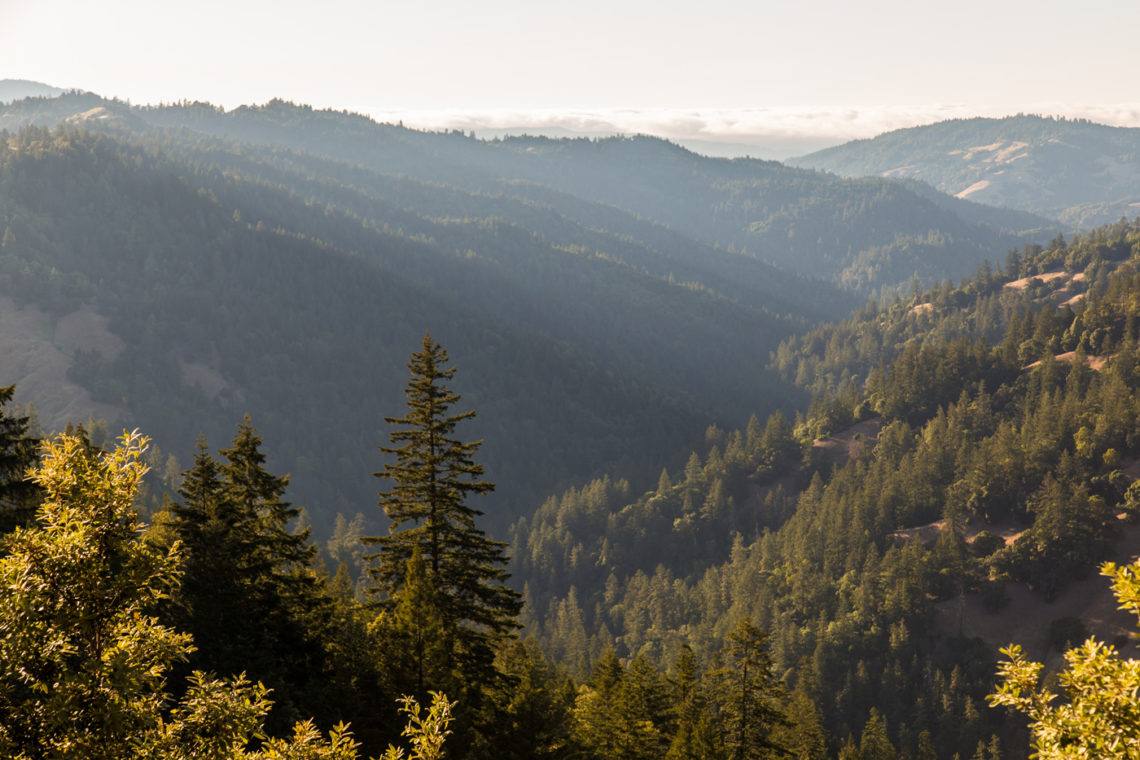
Beneath the canopy of a planted coast redwood grove in Southern California, with mature trees reaching toward an eternally blue sky, a woman, born and raised in South Central Los Angeles, communes with redwoods for the first time. She learns that after trees that had stood since the days of the Roman Empire were struck down to build San Francisco, only 5% of the old growth remains. After a moment of disbelief, her eyes well up with tears, and she reaches out to the thick, fibrous, cinnamon-hued trunks of the redwoods along the trail, as if to express her grief to the trees.
Old-growth coast redwoods exist now only as islands in a sea of young redwood forests that grew after 19th- and 20th-century logging, altering the landscape and its biodiversity for generations to come. In some cases, these old redwood stands feel like museums of some primeval past. Fortunately, it’s not too late for California’s iconic forests and the ecosystems and communities they support. A visionary idea may be coming to help: The 30 by 30 movement seeks to protect 30% of Earth’s lands and waters by 2030.
In his 2016 book Half-Earth, biologist and naturalist E.O. Wilson introduced a catalyzing theory: protecting half of our lands and seas for nature will save as many as 90% of imperiled species and secure the long-term health of the planet. Wilson invoked the coast redwood forest, the Amazon River basin, and the grasslands of the Serengeti as regions of the planet that can still be reclaimed. “ … mature redwood forests have created a new and mostly unexplored layer of life, within which exist species rare or absent elsewhere,” Wilson wrote. “Scientists and adventurers can camp there, enthralled by the archetype of the giant tree that rises to a mythic world in the sky.”
The idea took off. International conservation groups in 2018 signed a statement calling to protect 30% of Earth by 2030, and 50% by 2050. Thirty-eight countries and several U.S. tribal nations support the movement. Legislation was introduced into Congress, most recently in the House last year by Rep. Deb Haaland, now serving as Secretary of the Interior. California became the first in the nation to make the pledge in October 2020, and President Joe Biden followed suit with a similar executive order soon after taking office in January.
WHAT 30 BY 30 MEANS FOR REDWOODS
With its legacy of environmental protection, California provides significant opportunities to advance 30 by 30. “[California is] one of the globe’s biodiversity hotspots,” California Natural Resources Secretary Wade Crowfoot said recently. “We have so many different types of habitats and ecosystems, from [the] coastal redwoods to [the] Mojave Desert. … We also have really strong laws to protect species on the brink of extinction, but we need to do a lot more to preserve that nature and the health of biodiversity upstream.”
Save the Redwoods League is working toward goals for redwoods conservation that are closely aligned with 30 by 30. The League has protected more than 216,000 acres of California’s coast redwood and giant sequoia forests and helped to establish 66 redwood parks. Inspired in part by Wilson’s ambitious theory, the League unveiled a vision in 2018 to double the amount of protected coast redwood forests to 800,000 acres over the next century.
There are more than 1 million acres of privately owned coast redwood forest in California today, most of which is managed for commercial timber. The League’s goal is to collaborate with these landowners to identify opportunities for landscape-scale protection. This work aims to increase wildfire resilience, protect biodiversity, bolster a sustainable working and restoration forest economy, identify opportunities for tribal cultural access, and enhance opportunities for public access. 30 by 30 could facilitate this effort by providing public funding that the League would then leverage with philanthropic dollars to acquire lands and easements, restore recovering forest landscapes, and create and improve redwood parks for all.
CLIMATE CHANGE AND ECONOMIC DEVELOPMENT
California has long recognized the importance of the state’s natural and working lands—including forests—to its climate strategy, biodiversity, and communities’ well-being. “We used to think that the impacts of climate change would really present themselves at about mid-century,” Crowfoot said. “What we know now with the acceleration of climate change and its impacts is those threats are with us right now.”
Redwoods can play an important role in meeting the state’s climate goals. Coast redwood and giant sequoia forests store more carbon per acre than any other forest types in the world. But the big story is in the recovering second-growth redwood forests that are quickly and effectively storing massive amounts of carbon. A second-growth redwood forest can store up to 374 tons of carbon per acre, recovering about a third the amount of carbon as an old-growth forest in just 150 years, and will pack on much more over time.
The Biden Administration has called for the establishment of a new Climate Conservation Corps to bolster the economy while employing Americans to protect biodiversity, restore public lands, improve access to nature and outdoor recreation, and address climate change. Redwoods Rising—a partnership between the League, the National Park Service, and California State Parks—is a good example of what this type of program could look like on the ground. In Redwood National and State Parks, a new green workforce of local tribal and community members and students is working to restore publicly owned forests on California’s north coast. With appropriate federal and state investment, projects like Redwoods Rising could be replicated across thousands of acres of publicly owned forests, putting a new generation of rural residents to work in restoring fire and climate resilience to our public lands.
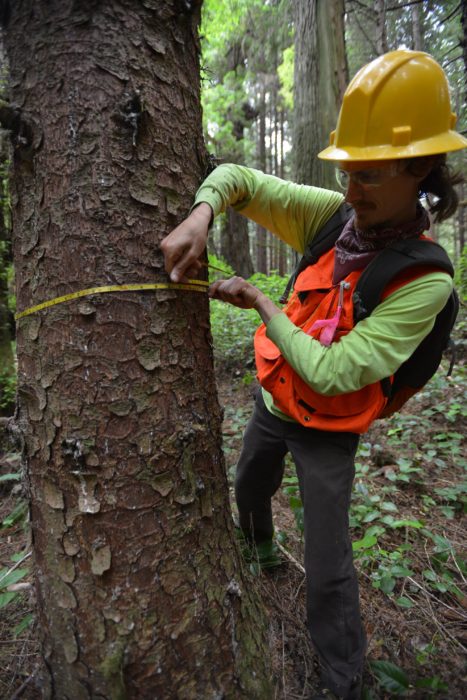
THE CURRENT STATUS OF 30 BY 30
So, where do we go from here? Every 30 seconds, an area the size of a football field is lost to development. The U.S. Geological Survey reports that only 12% of the country’s lands are permanently protected. California is a little ahead of the game with 22% to 27% protected. National Geographic estimates that meeting the 30 by 30 goal nationally would “require conserving an additional area twice the size of Texas, more than 440 million acres, within the next 10 years.”
Building the roadmap to 30 by 30 requires engagement at the local, state, and federal level and must include early and frequent consultation with historically marginalized groups, such as tribal nations. Reno Keoni Franklin, Chairman Emeritus of The Kashia Band of Pomo Indians and a League Councilor, joined leaders from multiple tribal communities in a statement of support for 30 by 30.
“We as tribal leaders believe that protecting at least 30% of U.S. lands and waters is necessary to safeguard our world by protecting biodiversity and mitigating climate change impacts,” the statement reads. “Tribal nations are key to the success of this initiative as we are intrinsically linked, both presently and historically, to existing and prospective protected areas. Tribal nations are the original stewards of these lands and waters and have been the most effective managers and protectors of biodiversity since time immemorial.”
It is monumental that Haaland, a member of the Laguna Pueblo Tribe (Kawaik) of New Mexico and the first Native American cabinet member, now holds authority over the nation’s public lands. Championed by many Native communities, her leadership will likely be key to ensuring tribal representation as 30 by 30 unfolds.
Save the Redwoods League has committed to engaging with communities in and around the redwood forests as equitable partners in conservation. The League continues to develop and foster partnerships with some of California’s federally recognized tribes that have ancestral connections to the redwood forests and with rural communities in Northern California and the southern Sierra Nevada.
FUNDING THE VISION
While there are no comprehensive estimates for the cost of 30 by 30, it will likely be in the billions. In his proposed budget for California, Gov. Gavin Newsom earmarked $1 billion for forestry and wildfire resilience, though it’s not clear if this will fund new protections for redwoods. At the federal level, the passing of the Great American Outdoors Act in August 2020 locked in billions of dollars for land conservation and outdoor recreation. The legislation allocated $9.5 billion to repair and upgrade campgrounds, trails, and other facilities at national parks and other public lands, and this could include many redwood parks that haven’t been updated in years.
The Act also permanently guarantees $900 million a year for the Land and Water Conservation Fund, which could finance much-needed protection and conservation work in the coast redwood and giant sequoia ranges. Many League land protection projects—including the recent purchase of Alder Creek in Giant Sequoia National Monument—have depended on the Fund.
While implementation of 30 by 30 is at an early stage, the collective recognition of landscape-scale conservation as a tool for supporting biodiversity, climate action, economic development, and thriving communities is hopeful. There’s a reason the story of the redwood forest can bring people to tears—too much has already been lost, yet what’s left is a powerful reminder of the shared resilience and relationship between humans and forests as old as time. “We have a kind of innate love of natural events and natural environments,” said Wilson in an interview during Half-Earth Day 2020. “What we’re doing is renewing an acquaintance with our own origins and our own ancestry.”
This feature appears in the beautiful printed edition of Redwoods magazine, a showcase of redwoods conservation stories by leading scientists and writers, as well as breathtaking photos, and ways you can help the forest.
Join our thousands of members today for only $25, and you’ll get future editions of our Redwoods magazine.

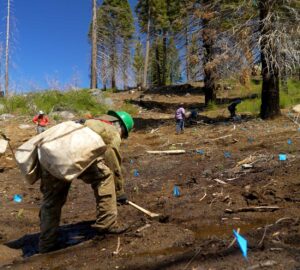
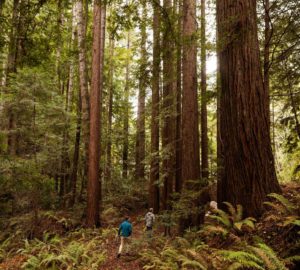
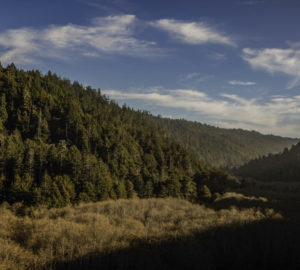
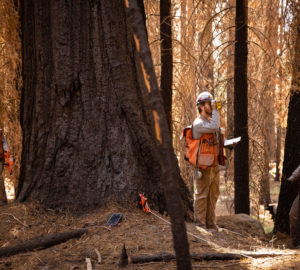
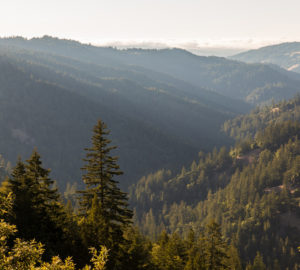
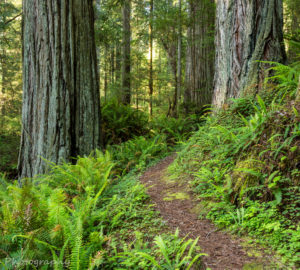
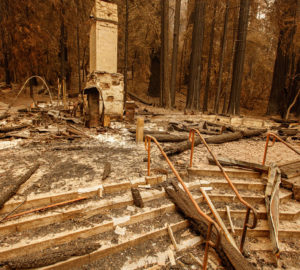
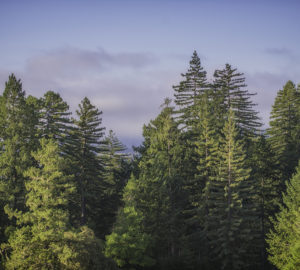
One Response to “30 by 30: The Future Is Forests”
Fred M. Cain
Dana,
Good article. I also enjoyed reading it in the printed version of the newsletter.
However, I have a serious concern about this that I’ve been concerned about for years. The fact is that the Nation’s national forests are just riddled full of private inholdings over which the Forest Service has little control. Buying up these inholdings should be a major goal and focus on the 30-30 initiative.
Don’t get me wrong, some inholdings have been purchased over the years but we have a long, long way to go. The problem is even worse in the Midwestern and Eastern states.
If you purchase an official U.S. Forest Map you can see what I mean. Forest Service maps indicate where the private land vs Forest Service land is. The private inholdings around Lake Tahoe, for example are ridiculous.
Over the years, the cash-starved Forest Service has done land trades and swaps in an effort to coalesce Forest Service land into larger blocks. But this has led to larger blocks in private hands. (Again, check out Lake Tahoe).
It would be my hope and dream that this can somehow get addressed. What it’s going to take is lots and lots of money, plain and simple.
Regards,
Fred M. .Cain,
Topeka, IN